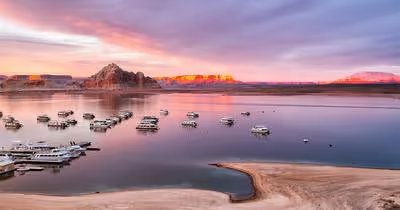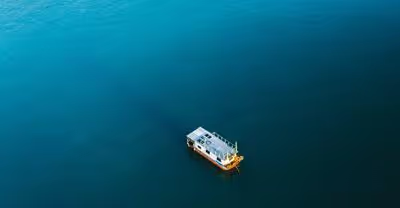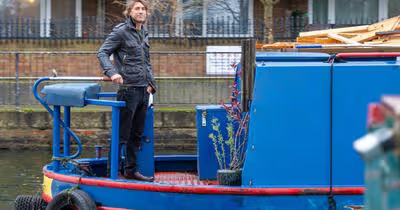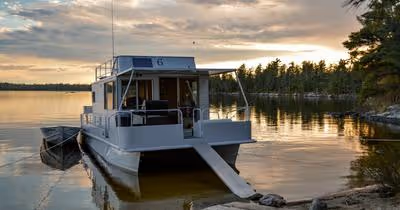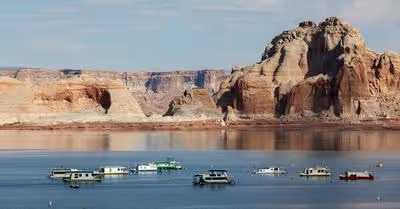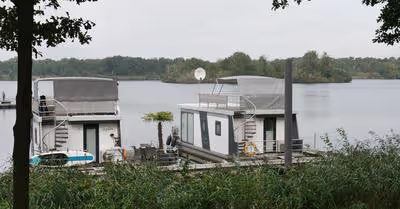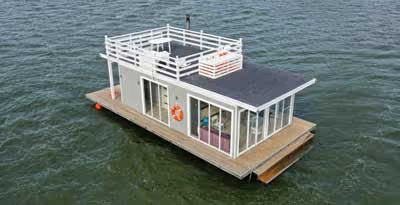
Though many people would rather not be in a tsunami, some people might want to know if you can drive a boat over a tsunami.
I enjoy being in a boat as much as the next person, but I sometimes fear I won’t know what to do if an emergency situation on the waters arises. Being in the ocean during a tsunami can be scary for anyone, but you can reduce your anxiety by being informed about what to do.
If you are in deep enough waters, you can probably drive your boat over a tsunami. If you are close to shore, getting to land and going to the highest point might be a better option. Your safest option depends on many factors, but you should be at least 100 meters offshore to stay on your boat.
I wish I could confidently say whether you should drive your boat over a tsunami or head for land, but the decision is not that straightforward. I would probably favor going to land if there were high structures or natural areas within a short distance from shore.
What I decide to do during one tsunami might be different during another one. Knowing I can drive a boat over a tsunami in deep waters at least gives me a reasonable survival option during any tsunami.
What Kind Of Boat Can I Drive Over A Tsunami?
There are many types of boats that might be out on the ocean at any given time.
If that time is shortly before a tsunami, you will probably want to know if a boat you’re in will be able to hold up over a tsunami.
There are no official standards for the types of boats that can be driven over a tsunami, but they should generally be able to stand up to normal deep ocean conditions.
If you have a smaller boat that wouldn’t normally be used in deeper waters, then you shouldn’t use it to take on a tsunami, even if the boat can technically drive over it.
Tsunamis typically occur in ocean water and mostly affect areas closer to shore.
Since tsunamis can last hours or more and produce numerous giant waves, you should stay out on the water for an extended period of time to avoid getting caught in a tsunami wave on your way back to land.
The impact closer to land can be much more catastrophic compared to farther out waves since the momentum continuously enlarges waves as they get closer to shore.
When you are out in deep water waiting for the tsunami to stop, you should be in a boat that is as stable as possible with adequate space for food, water, and other supplies you’ll need to sustain you and your passengers in the water.
It is best if your boat is powered with a motor and not manual or natural energy like a row boat or sailboat.
A tsunami can react in unpredictable ways, so you should be in a boat that can move as quickly as possible.
It will generally be safer for you and your passengers to be in a motor-powered boat in normal times when there aren’t any tsunamis.
How Do I Drive A Boat Over A Tsunami?
When I first heard about someone driving a boat over a tsunami, I envisioned a dramatic scene from a blockbuster movie where a small boat climbs hundreds of feet up and over the top of the tsunami.
In more realistic terms, boats should only be driven over a tsunami and low points of the tsunami waves.
These low points generally occur at least several hundred feet away from shore in large bodies of water like the Pacific Ocean.
In fact, most tsunamis occur in the Pacific Ocean, so you probably won’t have to worry about tsunamis as much in other bodies of water.
If you are in an area where a tsunami is happening, you should drive as fast as you safely can to deeper waters.
Whatever direction you determine can take you out farther, you should head that way continuously without making any unnecessary turns.
The more you can drive your boat along a straight line, the faster you can get your boat to deeper waters.
Aside from being able to captain a boat under normal circumstances, you don’t need any special skills to drive your boat over a tsunami.
Since there can be many erratic weather and water conditions present while you are driving your boat, having a captain or passengers with advanced nautical skills should be very helpful with properly navigating your boat.
Should I Drive A Boat Over A Tsunami?
Though I often enjoy driving or riding in a boat, I would rather get to land instead of driving over a tsunami.
If I happen to be caught out in water before a tsunami is set to hit, I might be better off in the water and heading over the tsunami if it hasn’t fully formed near me.
If your boat is docked and there are safe places on high ground you can go, it is probably better to not get in your boat and head to a safe location as soon as possible.
If your boat is in the water near the shore, you have to make a tough decision about what you need to do.
You should take into consideration the speed of your boat, water and weather conditions, boat traffic, and your ability to get to a safe location once you are on land.
I know it’s not an easy decision to make, especially when you might have passengers on board, but making a decision quickly can make a world of difference.
What Should I Do After I Drive A Boat Over A Tsunami?
Merely driving over a tsunami doesn’t remove the danger you’ll be facing out in ocean waters.
There are countless threats from sea life within the water, so you should do your best to avoid having your boat turned over or falling out of your boat.
To protect you and keep you afloat should you fall out of your boat, you should be sure to outfit yourself and everyone on your boat with a dependable life vest.
If you have access to any other gear that can help with safety and swimming, you should bring that on your boat and have them readily available.
Some items that can help you might include flotation devices, swimming goggles, and other items that help you survive in the water.
To help rescue personnel find you in the water, it could be beneficial to have a whistle, flares, and other items that can make you more visible in a wide ocean.
Presuming you and your passengers are able to stay in your boat, you should try to obtain accurate details about the tsunami so you when it's safe to return to shore.
There may be other recommended actions you should take depending on the news you receive.
If nothing aside from waiting is demanded from you, you should do your best to stay calm and keep everyone on your boat as calm as possible.
You should take note of all your food, water, medicine, and other supplies to ensure it is used at a pace that can sustain everyone for as long as possible.



